Tips
The main questions and answers about stoves and heating.
When using the fireplace stove or insert for the first time, follow the instructions and rules in the installation and operating manual.
On first heating, the paint is hardened/fired, which is accompanied by a temporary smell that will later disappear, see also Glossary.
To start a fire, you will need a firelighter or paper, dry kindling and wood chopped into smaller and larger pieces.
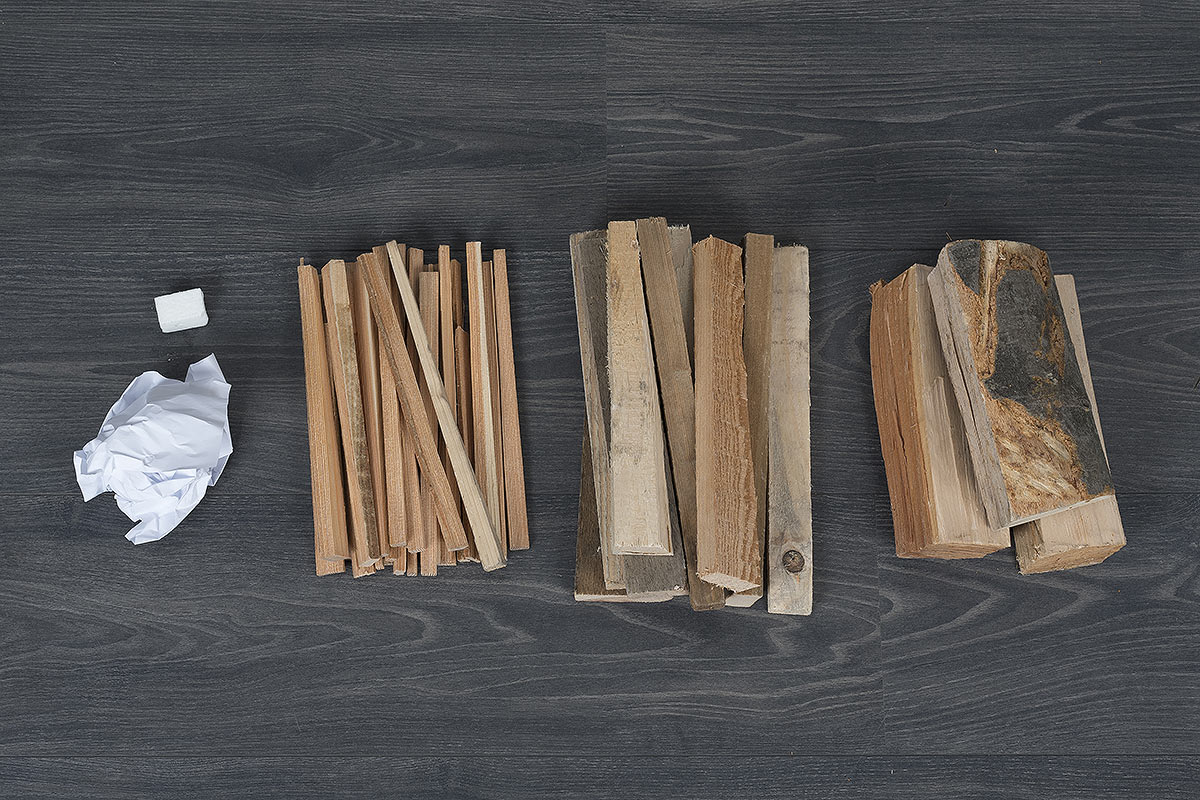
Before you start, fully open the primary and secondary air intake.
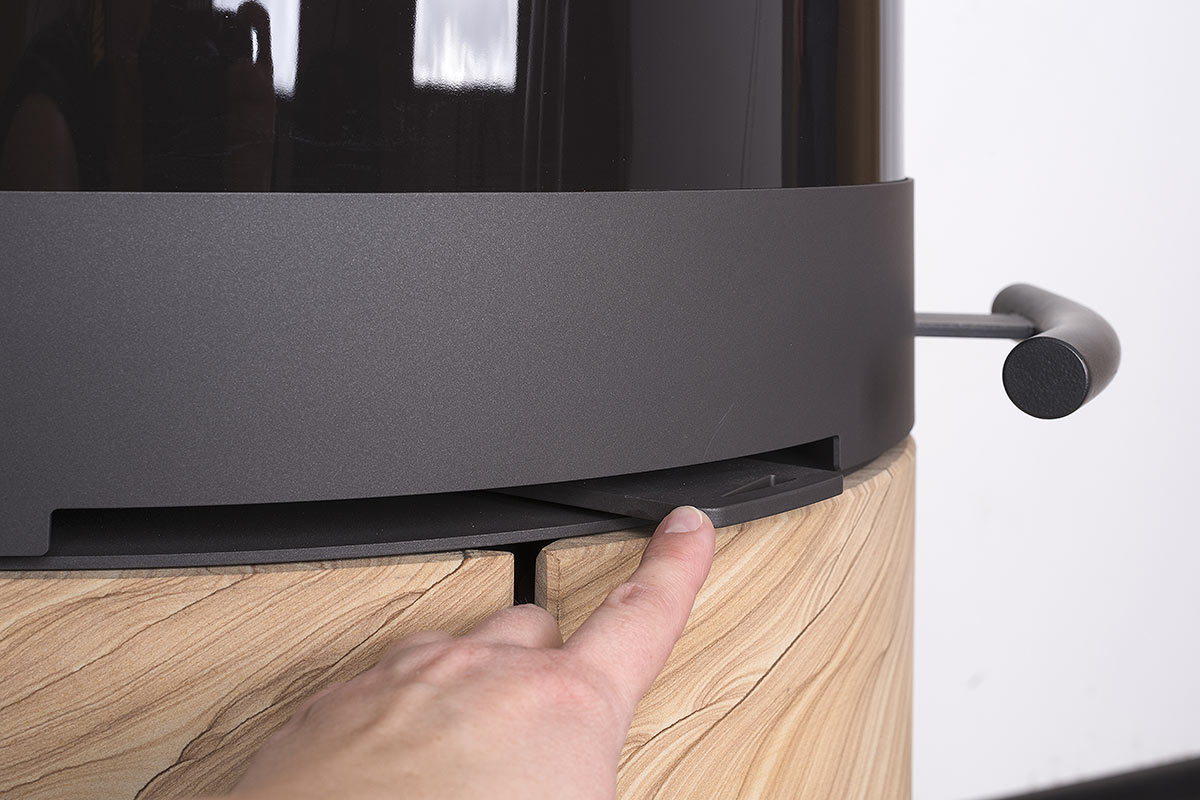
Place the larger pieces of wood in the chamber, followed by the smaller pieces of wood, firelighter and finally the kindling.
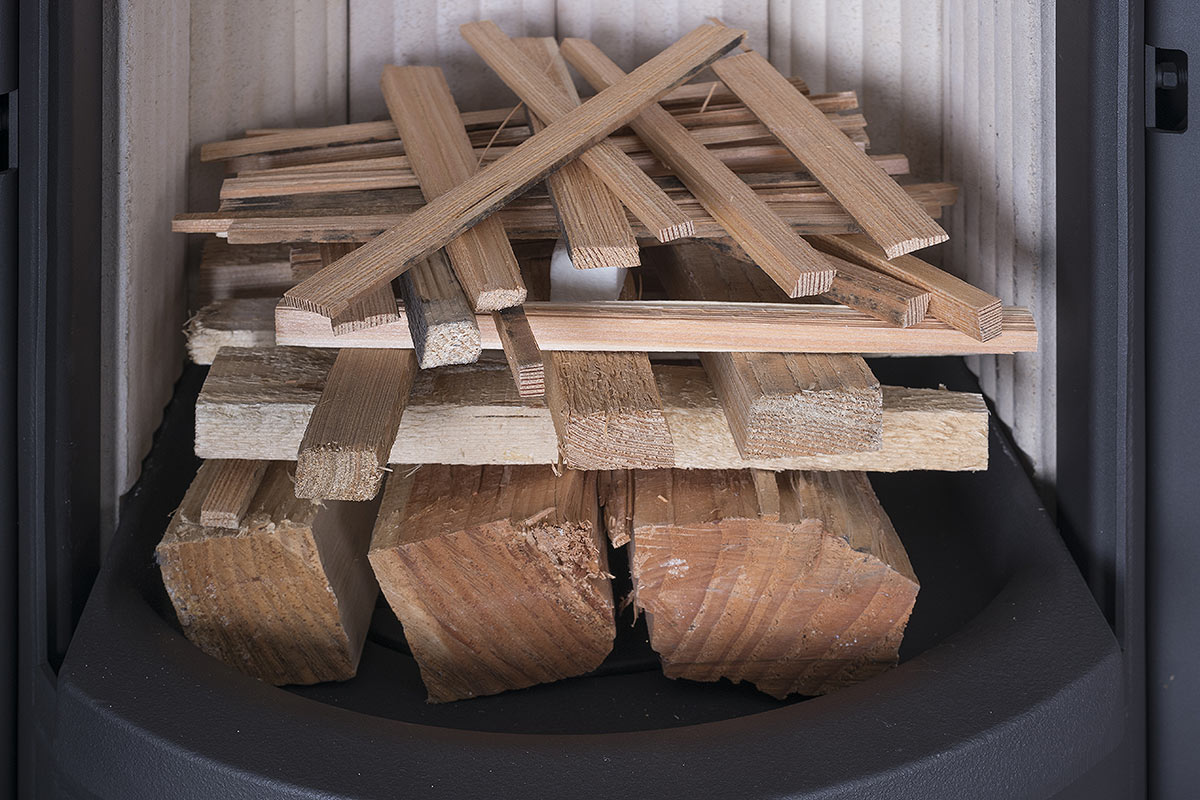
Light the paper or firelighter. This way of starting a fire will ensure optimum heating of the system, reduce the amount of smoke, save fuel and ensure the glass stays clean.
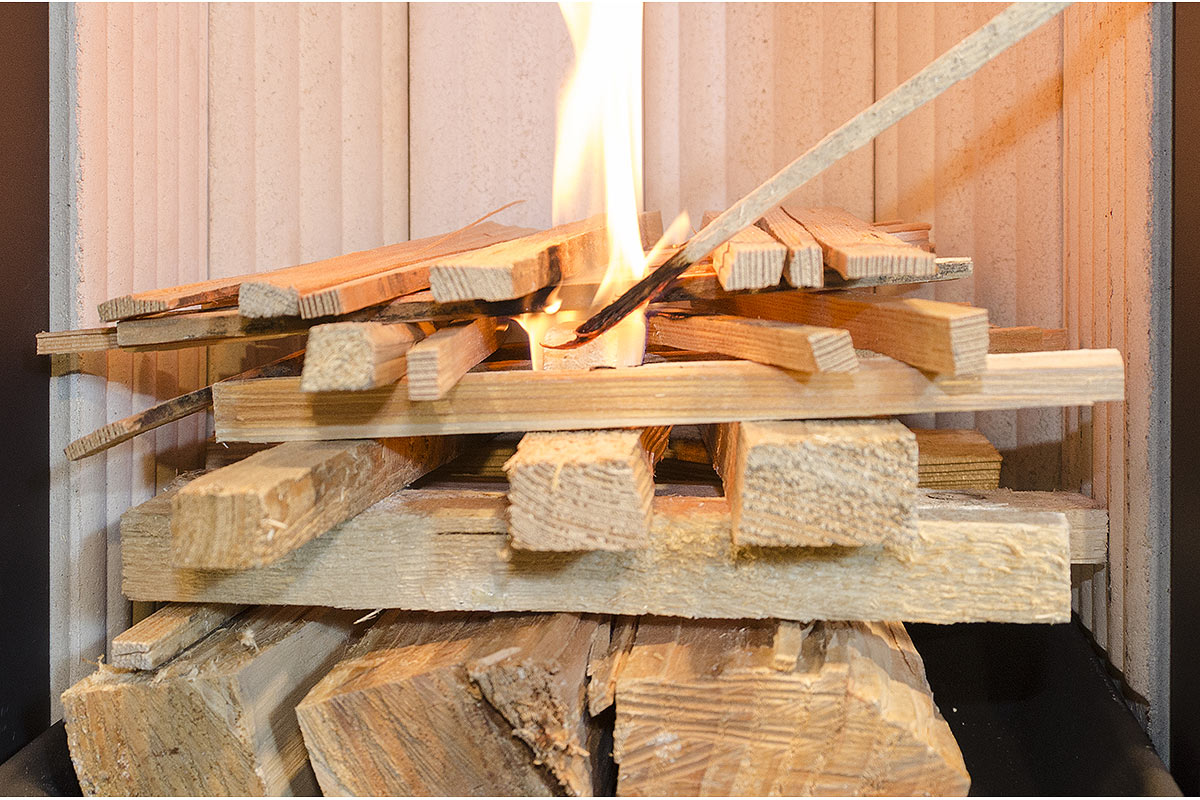
Stoking: The most important thing is to use dry wood only. Stoking is only necessary when there are only glowing embers and no flames in the stove or insert. Fully open the air intake. Leave the door partially open for a few seconds and only then open it fully. Place 2 to 3 logs on the glowing layer. Close the door.
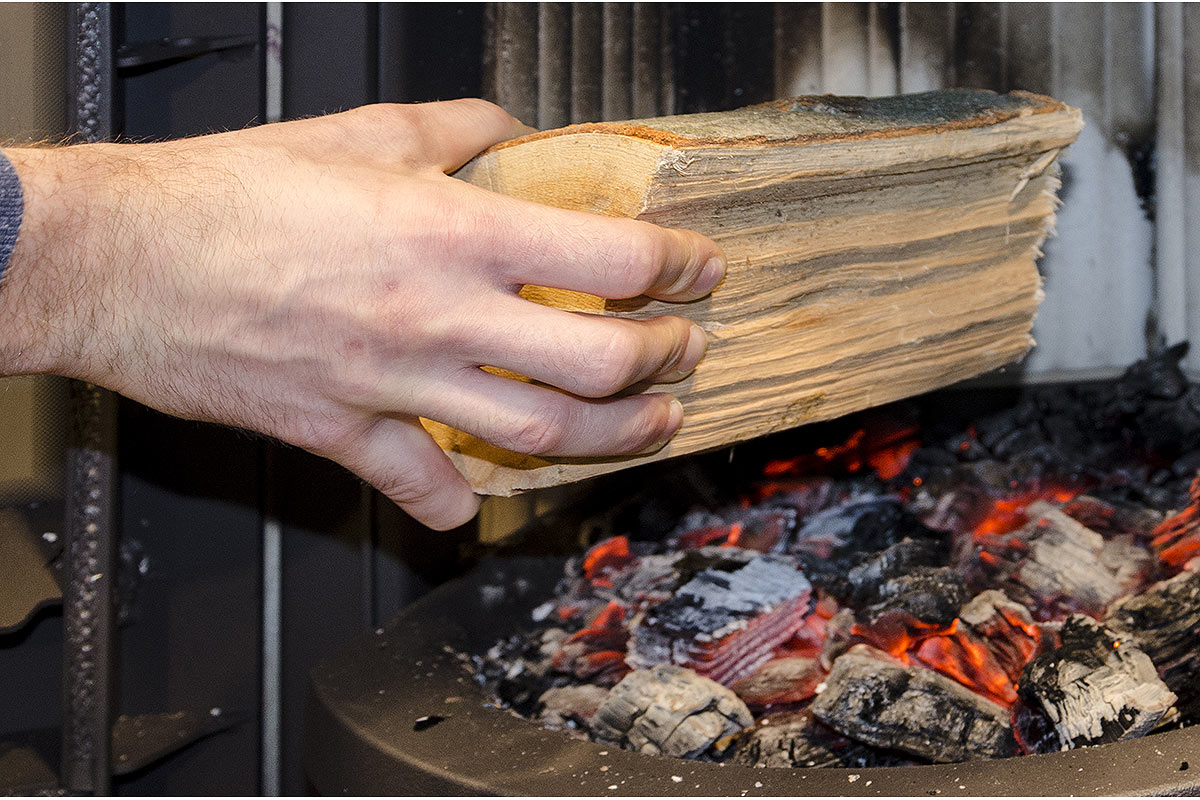
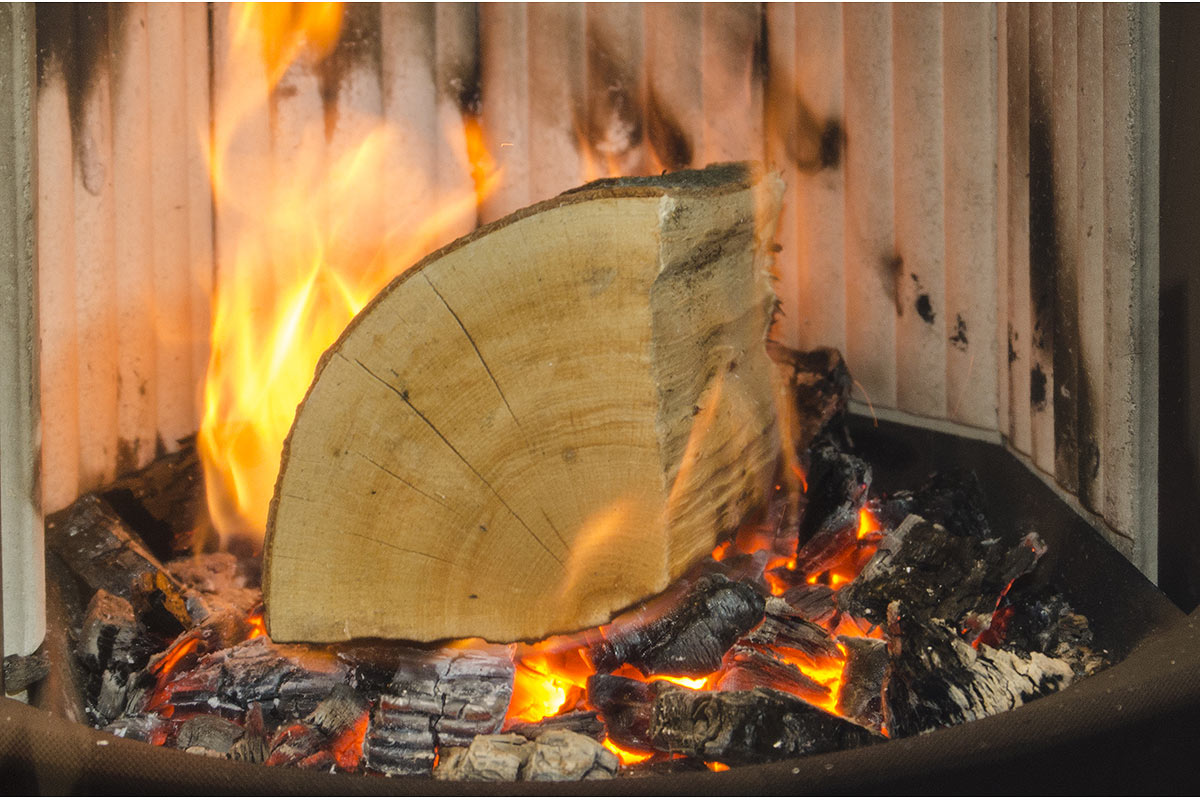
Set primary air intake to ensure optimum combustion, so the wood burns with a clear flame, without excessive smoke. Leave the secondary air intake open for the duration of heating, regulate the amount to adjust the burning intensity. Secondary air is also used to clean the glass.
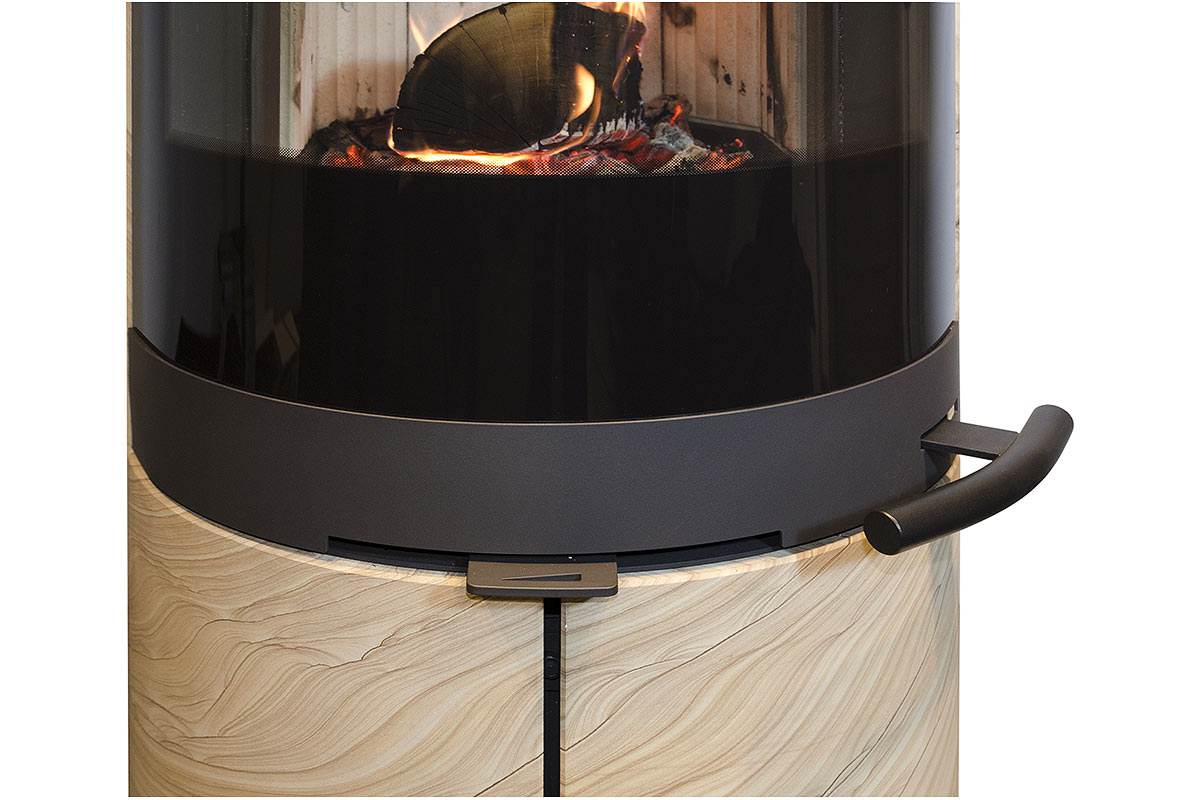
- Use dry wood for heating only. Try to start the fire as quickly as possible to sufficiently heat up the chamber, so that the gases released from the wood can burn properly. To achieve this, open the primary and secondary air intake.
- Stoke small amounts of wood at a time (2-3 logs) and always place them on the glowing embers; always leave the secondary air intake fully open.
- If there is a sufficient amount of glowing wood at the bottom of the combustion chamber, reduce the secondary air intake according to your heating requirements. Wood burns slower when the air intake is reduced.
- Do not throw wood into the furnace but insert it slowly so that you don’t damage the chamotte bricks or glazing!
The most important thing is to stoke on glowing embers only, never into flames. However, if you need to stoke into flames, you should leave the door partially open for a few seconds before fully opening it. The chimney draft will suck in the smoke gases and prevent them from entering your room.
You can burn practically any type of wood in RHÉA-FLAM stoves. The most important condition is that you should always use dry wood only. Wood should first dry out in an aerated sheltered location for at least 2 years. Ideally, you should chop the wood into pieces before storing it to allow it to dry out faster. In order to achieve the nominal parameters of the heating unit, we recommend using dry wood logs with a diameter of 5-8 cm, a length of 20-30 cm and a moisture content of less than 20% (optimally 10%). Twigs and small pieces of chopped wood should be used to start the fire only. Never use chemically treated wood!
Never use flammable liquids, coke, coal or waste such as chipboard, plastics, bags, impregnated wood or wood savings. sawdust or pellets as fuel!
Burning these materials not only heavily pollutes the environment but it also damages the fireplace stove and chimney!
The construction of RHÉA-FLAM fireplace stoves guarantees sufficient primary and secondary combustion air intake into the chamber. The primary air used to start the fire is supplied directly to the burning fuel (usually via the ash tray and grate) and is used for the primary combustion reaction. Secondary air supports the combustion of residual flammable gases in flue gases, which increases the heat output and plays a crucial role in reducing the amount of pollutants that escape into the environment. Secondary air is mainly supplied to the space above the burning fuel. This makes the cold air roll against the inside of the front glass (glazing). At the same time, this process prevents the glass from blackening. When the primary air intake is partially or fully closed, secondary air is also used for primary combustion. Detailed instructions for starting a fire and heating are given in the operating manual.
The glazing may crack after being hit by a log. A deterioration in the quality of glass seals may also play a role. If the seal is damaged, its sealing and dilatation function is compromised, and glazing may crack. In such a case it needs to be replaced. You can purchase glass (glazing) and the corresponding seal from authorized RHÉA-FLAM dealers or directly from the Manufacturer.
In most cases, damage (cracking) occurs mechanically. If the chamotte lining is only cracked, it does not need to be replaced immediately, but it must not have crumbled onto the metal sheet. Cracked chamotte bricks do not lose their function, unless they fall out completely. Chamotte bricks and tiles can be purchased from authorized RHÉA-FLAM dealers or directly from Manufacturer. Replace chamotte lining/bricks in accordance with the operating manual provided with your fireplace stove.
Only use original spare parts approved by the manufacturer for the repair and maintenance of RHÉA-FLAM products.
